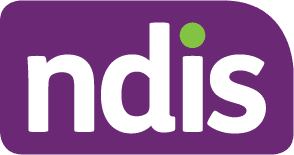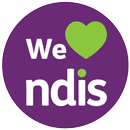Pathways to Better Living Pty Ltd – Emergency and Disaster Management
Introduction
Our organisation will create plans to ensure that we can effectively respond to emergencies and disasters. Planning for emergencies and disasters helps our organisation to:
- plan our responses to different types of emergencies and disasters
- manage associated risks, including risks to the health, safety and wellbeing of participants
- ensure continuity of supports during emergencies and disasters
This policy covers our approach to emergency and disaster management. For specific information about our pandemic management practices, see the Pandemic management policy.
- Applies when planning for and responding to emergencies and disasters
- Applies to all employees and key management personnel and contractors
Types of emergencies and disasters
There are many different disasters and emergencies that stem from a variety of causes. Some of the most common disasters and emergencies include:
- natural disasters, such as:
- bushfires
- hurricanes, typhoons, cyclones, and other severe weather
- earthquakes
- other location-specific natural disasters (landslides, floods, tsunamis)
- human-caused disasters and emergencies, such as:
- assault and other violent crime
- riots
- traffic accidents
- building fires
- robbery
- other incidents of mass trauma, such as:
- pandemics
Planning for emergencies and disasters
When creating emergency and disaster management plans, our organisation will:
- assess and manage risks associated with emergencies and disasters
- create plans that cover:
- risk assessment and mitigation strategies
- preparing for, and responding to different types of disasters
- the location of relevant emergency kits and facilities
- the responsibilities of workers and the governing body when responding to emergencies and disasters
- how supports will be modified to ensure continuity of supports during an emergency or disaster
- how we will respond and adapt to changes within participant supports and other interruptions
- how the governing body will test the plans and adjust them in the context of a particular emergency or disaster
- the date/s on which the plans must be reviewed
- communicate the content of the plans to workers, participants and participant support networks
- ensure that emergency management practices and guidelines around support continuity are also included as part of each participant’s service agreement
- consult participants and their support networks when developing the plans and putting them into place
- review our plans regularly
- consult participants and their support networks when undertaking plan reviews
- ensure the plans are easily accessible to relevant workers and participants via Comm.care
- ensure the contents of the plans are effectively communicated to workers, participants and participant support networks.
Continuity of supports
To ensure continuity of supports our organisation will:
- comply with our Business continuity policy and all relevant legislation
- record alternative support arrangements in:
- our emergency and disaster management plan
- our business continuity plan
- each participant’s service agreement
- communicate the contents of our emergency and disaster management plans to workers, participants and participant support networks
- adapt to and respond to any changes in the emergency and disaster situation
Each participant will have their own support plan in place. This support plan will include emergency and disaster management information attached, which will cover:
- strategies for ensuring each participant’s safety, health and wellbeing if there is an emergency or disaster of any kind (including individual, provider and community emergencies/disasters)
- strategies for responding to medical emergencies involving each participant
- processes for escalation for each participant’s urgent health situations
- strategies for ensuring continuity of supports for each participant if there is an emergency or disaster
We will ensure that each participant’s support plan is understood by each worker. This will be included in worker training.
Service Agreements
Our organisation will ensure that each participant’s service agreement sets out support arrangements that will be put into place in the event of an emergency or disaster.
Worker Training
When planning worker training, we will identify:
- key worker capabilities relating to emergency and disaster management (such as contingency planning or infection prevention or control)
- workers that have these capabilities.
Our organisation will conduct worker emergency and disaster management training during intake and throughout the course of employment. Our worker training will cover:
- the contents of emergency and disaster management plans
- understanding the support plan of each participant they will be supporting
- implementation of emergency and disaster management plans
- response actions to specific emergencies and disasters (including how to distinguish between urgent and non-urgent health situations)
- procedures for escalation of incidents
- how to maintain continuity of support
- how to adapt to changing emergency and disaster situations
Inducting a workforce in the event of a disaster
Based on their availability and skills, we will identify essential workers whose assistance will be required in the event of an emergency and disaster.
We will induct these workers and provide training as required.
Emergency toolkits and facilities
We will ensure that all relevant emergency tools and facilities are outlined in our emergency management plan and are always accessible. Emergency tools and facilities we provide may include:
- first aid kits
- emergency evacuation maps
- fire extinguishers
- smoke alarms
- torches
- emergency contact lists
Responsibilities of key management personnel
All key management personnel must:
- manage emergency and disaster management planning, response and recovery
- oversee the response to an emergency or disaster
- undertake risk assessments that include emergencies and disasters
- monitor local, state and federal government announcements and updates
- modify response actions in response to local, state and federal government announcements and updates
- communicate changes to supports to all relevant workers, participants and participant support networks
- obtain all relevant insurance for the organisation
- test all emergency and disaster management plans and adjust them in the context of a particular emergency or disaster
- review all emergency and disaster management plans to respond to the changing nature of an emergency or disaster
- audit the effectiveness of existing approaches to emergency and disaster management
- effectively communicate the content of emergency and disaster management plans to participants and their support networks (with the use of appropriate communication aids, if required)
- effectively communicate the content of emergency and disaster management plans to workers
- train workers to understand and implement emergency and disaster management plans
- manage any complaints and incidents that occur in line with all relevant policies, documentation and legislation
Responsibilities of workers
All workers must:
- take part in worker training
- understand all worker training content and material (and ask for clarification where required)
- adhere to the emergency and disaster management plans, as well as other relevant policies, legislation and documentation
- escalate and respond to incidents in accordance with our Incident management policy and all relevant legislation
- assist each participant to understand emergency and disaster situations and their impact on them and their supports.



